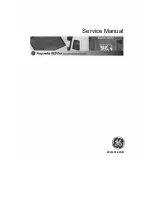
AUTOMOTIVE SHORT AND
OPEN FINDER
INTRODUCTION
1
HOW
TO
USE
THE
PROBE
CAUTION
2
This instrument is designed to identify and trace wires or
cables without damaging the insulation. You can also use it in
checking for short circuit and locating open circuit and so on.
There are a Transmitter and a Receiver included in the
instrument.
1. Only for use on DC voltage, don’t connect to circuit
exceeding42 volts DC under any circumstances.
2. Do not use on AC voltage.
3. Do not use on any circuit directly or indirectly connected to
AC lines or any other AC power source.
4. Do not use with any component or circuits of the ignition
system.
5. Before using this device, check the vehicle’s electrical wiring
and disconnect any part or system sensitive to voltage and
current pulses such as air bags, electronic control modules,
etc.
6. After you finish checking vehicle, make sure you have
correctly restored all the connections which you disconnected.
7. Always follow the instructions and procedures indicated in
the Vehicle’s service manual before attempting to disconnect
any part or subsystem of the electrical circuit.
Exceeding the limits listed above when using this
apparatus, or not observing the precautions listed above can
expose you to physical injury and permanently damage your
instrument and parts and circuits of the vehicle under test.
The probe of the Receiver is built of coiled steel and may be
bent as needed, in order to reach wires in congested or difficult
areas. Depending on the circuit characteristic and sensitivity
settings, the probe will pickup the signal from the wire in a
range of positions. However, for the best possible range the
Receiver’s probe tip(blackcap) should be positioned
perpendicular(at90o) to the wire being traced and either above
or below it. See Figure 1.
cable
Figure 1
SETTING
SENSITIVITY
LEVEL
WIRE TRACING
Note: Observe the limits and safety precautions at all
times.
1. Set the switch of Sender to "TONE", the red LED of Sender
lights, if the red LED doesn’t light, please check the battery.
2. Switch Receiver on , set the rotary switch in middle position.
Press and hold TEST button, meanwhile move the sensor
close to the test lead of Sender. Receiver receives the signal
and give audio signal. if so, it means that the unit works
correctly.
3. Connect the black test lead to the circuits positive supply(or
to the negative for vehicles with positive supply connected to
chassis). Connect the red test lead to the wire to be traced. A
fuse socket(in place of the blown fuse),connector, etc. is
convenient place.
4. Set the rotary switch in middle position. Press and hold
TEST button., meanwhile move the probe as close as possible
to the wire to be traced. The Receiver’s sensor should be
positioned perpendicular(at 90
°
) to the wire being traced and
Either above or below it.
5. Receiver gives audio signal. Trace the wire by following the
audio signal of Receiver. If you move the probe away from the
wire, the audio signal will decrease and then disappears.
6. if it is difficult or impossible to get the Receiver to pick-up
any signal, please increase the sensitivity and try again. For
the suspect table place, check it twice. See Figure2 , 3.
3
4
Figure 2
Figure 3
CHECKING FOR SHORT CIRCUIT
Note: Observe the limits and safety precautions at all times.
1. Disconnect the power to the wire to be checked and remove
all the loads from this wire(for example: remove the lamp from
the wire).
2. Set the switch of Sender to "CONT" position. Connect the
test leads to a couple of wires which are to be checked.
3, When the resistance is less than10k ohm, the green LED of
"CONT" will tight. With all the loads having been removed, the
green LED's lighting indicates that the couple of wires are in
short circuit.
Note: Observe the limits and safety precautions at all times.
1. Set the switch of Sender to "TONE", the red LED of Sender
lights. if the red LED doesn’t light, please check the battery.
2. Switch the Receiver on, set the rotary switch in middle
position. Press and hold TEST button, meanwhile move the
LOCATING OPEN CIRCUIT
Test button
probe
rotary
switch
test lead
Fuse Socket
or Connector
To turn on Receiver or increase its sensitivity, turn the
rotary switch of Receiver clockwise. To turn off Receiver or
decrease its sensitivity, turn the rotary switch anticlockwise.
7. When you finish tracing, disconnect the test leads’
Connections ,set the Sender’s switch in OFF position . Loose
TEST button.
Receiver
Sender/Transmitter




















